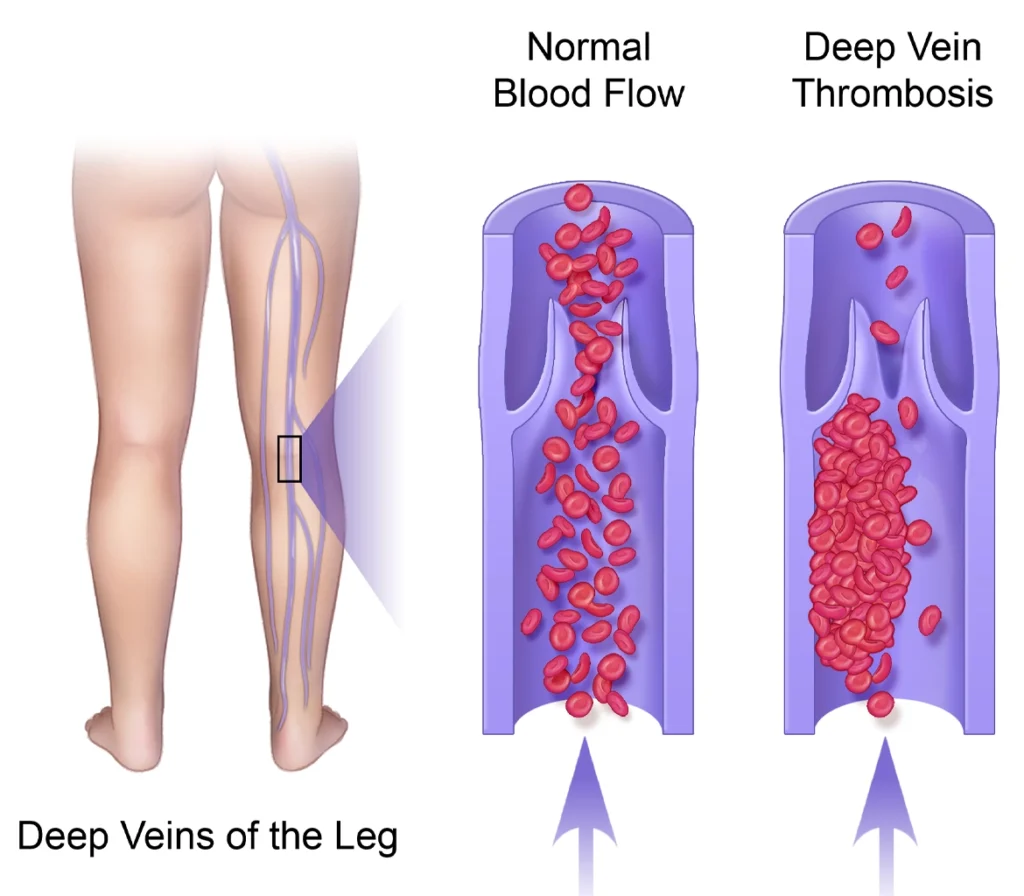Lateral epicondylitis (tennis elbow) is caused by repetitive stress to the tendons and muscles surrounding the elbow. A number of new, abnormal blood vessels form around the joint. This is called angiogenesis, and it is the body’s response to repair the damage. However, these new blood vessels can contribute to a high degree of pain and discomfort. Elbow embolization is a safe and effective non-surgical outpatient treatment for this condition. This embolization procedure is also an excellent treatment option for medial epicondylitis (golfer’s elbow).


Catheter-directed thrombolysis has been shown to break down blood clots more effectively than anticoagulation medicine, and because it is more highly targeted, it requires lower doses than systemic thrombolysis. Additionally, it is a safe and effective alternative to open surgery, and there is no surgical incision so you can return home shortly after the procedure.
Benefits of catheter-directed thrombolysis:
- High success rate
- No hospitalization required
- No anesthesia needed
- Shorter recovery
- Minimal pain
- Fewer reported side effects
Preparation Instructions
- Please inform us of all medications you are taking, including herbal supplements, and if you have any allergies, especially to local anesthetic, medications or contrast (also known as “x-ray dye”).
- You may be advised to stop taking aspirin, nonsteroidal anti-inflammatory drugs (Tylenol, Advil) or a blood thinning medication for a period of time before your procedure.
- Please inform us about recent illnesses or other medical conditions.
- Unless otherwise instructed, you may take your usual medications, especially blood pressure medications. These may be taken with some water in the morning before your procedure.
- You may be instructed to refrain from eating or drinking anything for several hours before your procedure.
- You may need to remain for a period of observation after your procedure.
- You will be given a gown to change into before your procedure.
For more information or to schedule a consultation, contact us at North Star Vascular and Interventional. We’re here in the Minneapolis area to provide friendly, expert care and help you stay healthy and active.
DVT Treatment in Minneapolis — FAQ
Anyone can get DVT, but risk goes up if you have a family history, are over age 60, have recently been immobile (such as after surgery or a long flight), are pregnant, or take certain medications like birth control or hormone replacement therapy. People with active cancer or clotting disorders are also at higher risk.
DVT is considered a medical urgency. Prompt treatment dramatically lowers the risk of complications such as pulmonary embolism or permanent vein damage (post-thrombotic syndrome). If you suspect DVT, seek evaluation as soon as possible.
Untreated DVT can lead to a dangerous blood clot traveling to your lungs (pulmonary embolism), which can be fatal. Long-term, untreated DVT may cause chronic pain and swelling because of lingering damage to the veins (post-thrombotic syndrome).
If you have (or are recovering from) DVT, always talk to your doctor before flying or traveling long distances. Sometimes, travel is restricted for a period after diagnosis or treatment. Your provider may suggest wearing compression stockings, moving regularly, and sometimes using blood thinners while traveling.
Not always. The length of time you’ll need blood thinners depends on why the clot occurred and your risk of recurrence. Some patients only need a few months, while others with ongoing risk factors may need longer-term therapy.
- Stay active and avoid long periods of sitting or bed rest
- Maintain a healthy weight
- Stay hydrated, especially during travel
- Wear compression stockings if advised by your doctor
- Follow up regularly with your specialist
Catheter-directed thrombolysis is used when rapid relief is needed or blood thinners alone may not be effective (such as with large or severe clots). This minimally invasive procedure targets the clot directly, often leading to faster symptom improvement and less long-term vein damage, though not all patients are candidates.
Risks include bleeding, bruising, infection, and in rare cases, fragments of clot traveling to the lungs. North Star Vascular & Interventional uses modern safety protocols to minimize these risks, but your doctor will discuss your specific risks based on your medical history.
Most major insurers, including Medicare, usually cover DVT diagnosis and treatment, including catheter-directed thrombolysis, if medically necessary. It’s always best to check specific coverage or obtain pre-approval through North Star’s billing department before your procedure.
Patients often return to light activity within a day or two after catheter-directed thrombolysis. More strenuous activity may be restricted for a short while; your doctor will provide specific guidance based on your recovery.
You should see a vascular/interventional specialist if:
- You have symptoms of DVT or confirmation of a clot
- You haven’t responded to standard blood thinners
- You’re seeking minimally invasive options for faster relief or ideal recovery
Your primary care doctor may refer you, but you can also contact North Star Vascular & Interventional in Minneapolis directly for an evaluation.